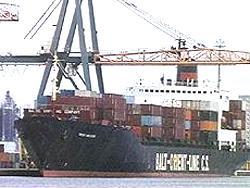Import Levels Expected to Rise in July but Drop as Tariffs Take Hold
Washington, DC, July 10, 2025-Import cargo volume at the nation’s major container ports is expected to rebound this month after a double-digit drop in late spring but is forecast to fall again after previously paused tariffs take effect, according to the Global Port Tracker report released by the National Retail Federation and Hackett Associates.
“The tariff situation remains highly fluid and retailers are working hard to stock up for the holiday season before the various tariffs that have been announced and paused actually take effect,” NRF vice president for supply chain and customs policy Jonathan Gold said. “Retailers have brought in as much merchandise as possible ahead of the reciprocal tariffs taking effect, and the latest extension to August 1 is greatly appreciated. Nonetheless, uncertainty over tariffs makes it increasingly difficult for retailers to plan, especially small businesses that have no capacity to absorb tariffs. Tariffs are paid by U.S. companies, not foreign countries or businesses, and ultimately drive up prices for American families while impacting the availability of products. It is vital for the administration to finalize negotiations with our trading partners and provide stability and certainty for U.S. retailers.”
President Trump on Monday signed an executive order delaying “reciprocal” tariffs until August 1 but also announced tariffs of up to 40% on more than a dozen countries. The president has indicated he will send out additional letters to other countries. There are also questions about what happens with tariffs on China tariffs in August even though a deal was recently signed.
“A flurry of tariff-related announcements from the Trump administration has only served to further increase supply chain uncertainty,” Hackett Associates Founder Ben Hackett said. “The global supply chain functions best in a trade environment that is smooth and predictable. Instead, it has been forced to contend with erratic policies and geopolitical volatility.”
